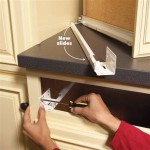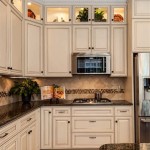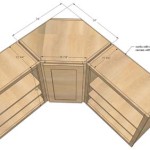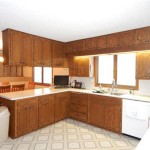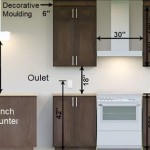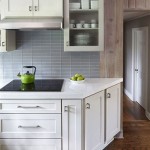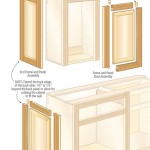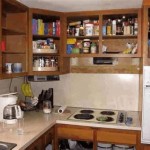How To Repair Loose Laminate On Kitchen Cabinets
Laminate kitchen cabinets offer a cost-effective and aesthetically pleasing surface. However, over time, the laminate can begin to peel or loosen due to moisture, impact, or general wear and tear. Addressing this issue promptly prevents further damage and maintains the cabinet's appearance. This article provides a comprehensive guide to repairing loose laminate on kitchen cabinets.
Assessing the Damage: Before initiating any repair, carefully examine the affected area. Determine the extent of the delamination and identify any underlying causes, such as water damage or loose screws. This assessment will inform the appropriate repair method.
Gathering the Necessary Tools and Materials: Having the correct tools and materials on hand ensures a smooth and efficient repair process. Typically, these include:
- Putty knife
- Wood glue (specifically designed for laminate repair)
- Contact cement (optional, for more severe delamination)
- Clamps
- Damp cloth or sponge
- Heavy object (books, weights)
- Sandpaper (fine grit)
- Laminate repair paste (for filling gaps or chips)
- Safety glasses
Repairing Minor Delamination: For areas where the laminate is only slightly lifted, wood glue often suffices. Using a putty knife, carefully apply a thin, even layer of wood glue beneath the loose laminate. Ensure the glue reaches all detached areas. Wipe away any excess glue with a damp cloth. Apply firm, even pressure to the repaired area. Clamps can distribute pressure evenly and ensure proper adhesion while the glue dries. Follow the manufacturer's instructions regarding drying time.
Addressing More Significant Delamination: When the laminate is significantly peeled back or if wood glue proves insufficient, contact cement provides a stronger bond. Apply a thin layer of contact cement to both the underside of the laminate and the cabinet surface. Allow the cement to dry until it becomes tacky. Carefully align the laminate and press it firmly onto the cabinet surface. Once in contact, the bond is immediate, so precise placement is crucial. Apply pressure using clamps or heavy objects to ensure a strong, lasting bond.
Utilizing Heat for Enhanced Adhesion: Applying heat can further enhance the bonding process, particularly with contact cement. Using a household iron set to a low setting, briefly and carefully apply heat over the repaired area. The heat reactivates the adhesive, strengthening the bond. Avoid excessive heat, as this can damage the laminate.
Repairing Chips and Gaps: Minor chips or gaps in the laminate can be addressed using laminate repair paste. Select a paste that closely matches the cabinet's color. Apply the paste to the damaged area, smoothing it with a putty knife to blend seamlessly with the surrounding surface. Allow the paste to dry completely according to the manufacturer's instructions. Lightly sand the area with fine-grit sandpaper to achieve a smooth, even finish.
Preventing Future Delamination: Once the repair is complete, taking preventative measures can minimize the risk of future delamination. Ensure adequate ventilation in the kitchen to reduce moisture buildup. Promptly address any leaks or spills near the cabinets. Avoid placing hot objects directly on the laminate surface. Regularly inspect the cabinets for any signs of loosening and address them promptly.
Seeking Professional Assistance: For extensive damage or complex repairs, consulting a professional cabinet repair specialist is recommended. They possess the expertise and specialized tools to handle more intricate repairs and ensure a high-quality, lasting result.
Maintaining Laminate Cabinets: Proper maintenance plays a crucial role in preserving the longevity and appearance of laminate cabinets. Clean cabinets regularly with a mild detergent and damp cloth. Avoid using abrasive cleaners or scouring pads, as these can scratch the laminate surface. Dry the cabinets thoroughly after cleaning to prevent moisture damage.
Understanding the Importance of Prompt Repairs: Addressing loose laminate promptly prevents the problem from escalating. Small areas of delamination can quickly worsen if left unattended, potentially leading to more extensive and costly repairs. By taking swift action, one can maintain the integrity and aesthetic appeal of their kitchen cabinets.
Selecting Appropriate Adhesives: Choosing the right adhesive is paramount for a successful repair. Consider the extent of the damage and the type of laminate when selecting an adhesive. Wood glue is suitable for minor repairs, while contact cement is preferred for more significant delamination. Always follow the manufacturer's instructions for proper application and drying times.

How Do You Paint Laminate Kitchen Cupboards When They Re Ling Hometalk

Repair Loose Vinyl Cabinet Door Edges

How Do I Fix Laminate Cabinets Hometalk

Laminate Repair Tips Reglue Loose Countertop Diy Kitchen Countertops Home Improvement

How Do I Repair The Edges On My Laminate Cupboards Hometalk

How To Glue Back Down Cabinet Laminate

How To Repair Laminate Cabinets Hunker

Theril Kitchen Cabinet Doors Can Bubble Or Fade Here S What You Do The Seattle Times

How To Install Laminate Countertops Yourself Dumpsters Com

Expert Composite Laminate Worktop Repair Foreman Snags
Related Posts

